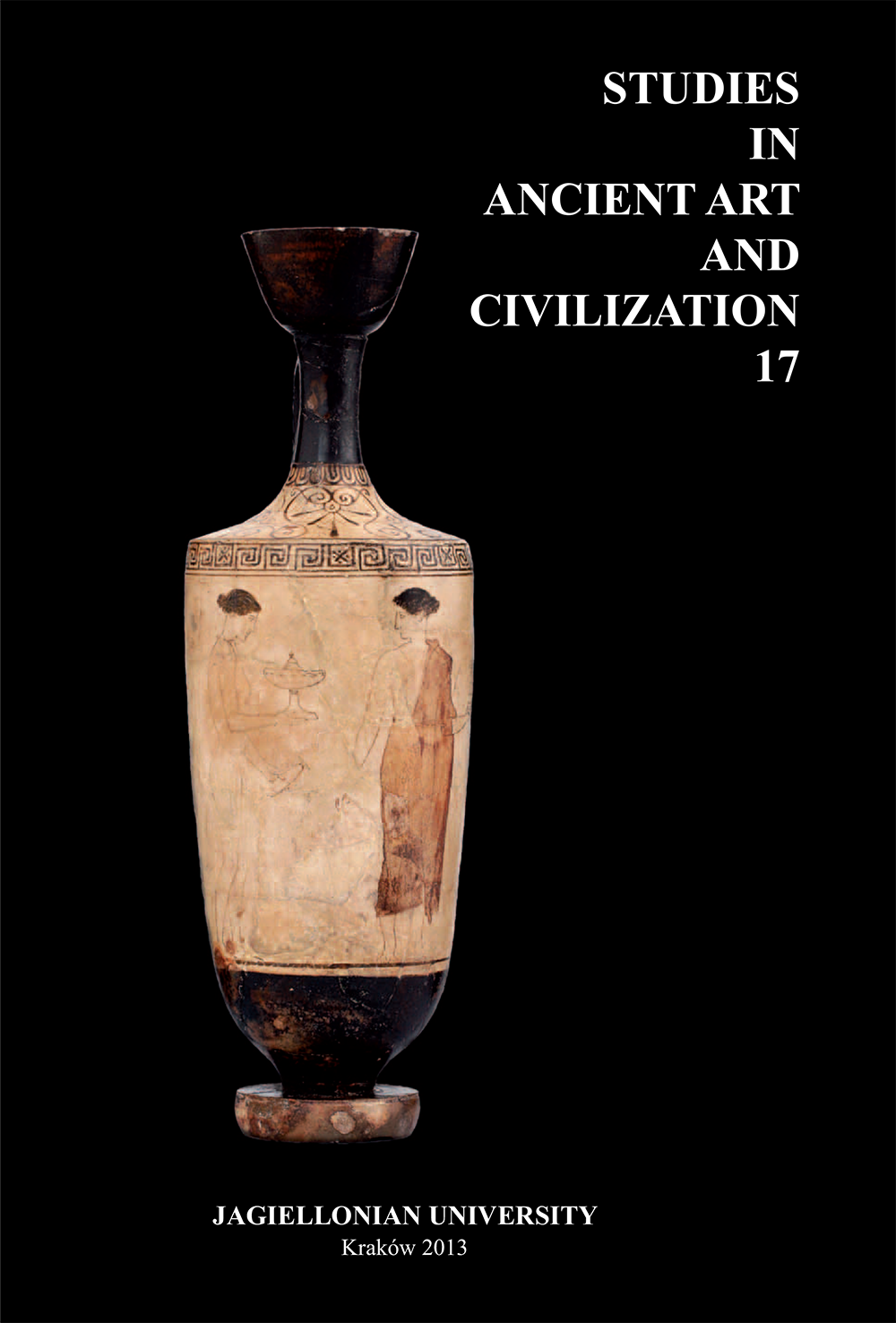Notes on Representations of Hoplites with Double Spears in Archaic Greek Art and the Usage of Javelins and Spears by the Archaic Phalanx
DOI:
https://doi.org/10.12797/SAAC.17.2013.17.09Keywords:
ancient Greek warfare, spear, phalanx, Archaic artAbstract
The purpose of this article is to answer questions concerning the usage of spears and javelins by the warriors of Archaic Greece. More precisely, the possibility of the hoplites using javelins as an offensive weapon when fighting in the phalanx formation will be examined through the analysis of contemporary iconographical sources. The article will also present how depictions of hoplites with double spears could be interpreted and used within the theory of Archaic Greek warfare and examine the reliability of such images.
References
Anderson J. K. 1991. Hoplite weapons and offensive arms. In V. D. Hanson (ed.), 15-37. DOI: https://doi.org/10.4324/9780203423639_chapter_1
Boardman J. 1983. Symbol and story in Geometric art. In W. G. Moon (ed.), Ancient Greek Art and Iconography, 15-36. London.
Ducrey P. 1985. Guerre et guerriers dans la Grèce antique. Paris.
Hannestad L. 2001. War and Greek art. In T. Bekker-Nielsen and L. Hannestad (eds), War as a Cultural and Social Force: Essays on Warfare in Antiquity, 110-119. Copenhagen.
Hanson V. D. (ed.) 1991a. Hoplites, the Classical Greek Battle Experience. London, New York.
Hanson V. D. 1991b. Hoplite technology in phalanx battle. In V. D. Hanson (ed.), 63-86. DOI: https://doi.org/10.4324/9780203423639_chapter_3
Hurwitt J. W. 2002. Reading the Chigi vase. Hesperia 71, 1-22. DOI: https://doi.org/10.2972/hesp.2002.71.1.1
Jarva E. 1995. Archaiologia on Archaic Greek Body Armour. Rovaniemi.
Kagan D. and Viggiano G. F. 2013. The hoplite debate. In D. Kagan and G. F. Viggiano (eds), Man of Bronze. Hoplite Warfare in Ancient Greece, 1-56. Princeton, Oxford. DOI: https://doi.org/10.1515/9781400846306-004
Krentz P. 2002. Fighting by the rules: the invention of the hoplite agôn. Hesperia 71, 23-39. DOI: https://doi.org/10.2972/hesp.2002.71.1.23
Lissarrague F. 1989. The world of the warrior. In C. Bérard (ed.), A City of Images: Iconography and Society in Ancient Greece, 39-52, transl. D. Lyons. Princeton.
Lissarrague F. 1990. L’autre guerrier: archers, peltastes, cavaliers, dans l’imagerie attique. Paris, Rome.
Lorimer H. L. 1947. The hoplite phalanx. BSA 42, 76-138. DOI: https://doi.org/10.1017/S0068245400007279
Matthew Ch. A. 2012. A Storm of Spears. Understanding the Greek Hoplite at War. Barnsley.
Miścicki W. 2012. Thoughts on changes in Greek warfare during the Archaic period with reference to the representation of the phalanx in contemporary art. SAAC 16, 85-104.
Parker R. 2000. Sacrifice and battle. In H. van Wees (ed.), 299-314. DOI: https://doi.org/10.2307/j.ctvvnbwv.15
Snodgrass A. M. 1964. Early Greek Armour and Weapons from the End of the Bronze Age to 600 BC. Edinburgh.
Snodgrass A. M. 1999. Arms and Armor of the Greeks. Baltimore.
Wees van H. 2000a. The development of the hoplite phalanx: iconography and reality in the seventh century. In H. van Wees (ed.), 125-166.
Wees van H. (ed.) 2000b. War and Violence in Ancient Greece. London.
Wees van H. 2004. Greek Warfare: Myths and Realities. London.






